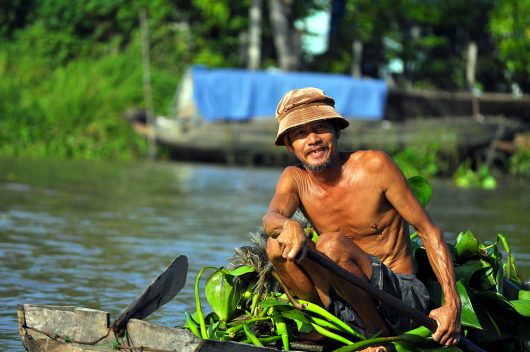
Laos is a poor communist country — the result of a complicated history. Since declaring sovereignty in 1954 American contributions poignantly shape Laos’s physical landscape, albeit initially with bombs. More recent U.S. administrations, alongside international investors, have bequeathed the type of strategic investments in Laos that encourage economic development and social prosperity. Poverty in Laos is shifting.
The Lao people experienced a prolonged period of civil war and armed conflict immediately following independence. After years of abounding poverty, the economy writhed amid growing American anti-communist actions in neighboring Vietnam and Cambodia. The fighting soon leached across Laotian borders as part of a wider U.S. bombing campaign. While Laotians initially measured U.S. contributions only in terms of explosive tonnage, current administrations have retooled U.S. foreign policy in Laos to encourage growth. These efforts require a detailed understanding of Laos and its people.
Agrarianism dominates Laotian society. Rural farmers require an adequate road system to bring the agricultural goods market. In 2015, only 14 percent of all roadways in Laos were paved. Poverty in Laos exists predominantly in rural areas, the same locations growing crops with inadequate transportation infrastructure.
Transportation network improvements implemented in the late 1990s provided proof of a strong correlation between targeted infrastructure investment and rural poverty reduction. The Lao Peoples Democratic Republic (PDR) government conducts household surveys every fifth year, the Lao Expenditure and Consumption Survey, which enables the study of poverty rates. Peter Warr, a professor of agricultural economics at the Australian National University, compared the two surveys that bracket the late 90s improvements to imply, “about 13 percent (one-sixth) of the reduction in rural poverty incidence… can be attributed to wet season road access.”
Poverty in Laos and War
The combined impacts of civil war and a U.S. bombing campaign in Laos staunched civil progress and economic prosperity. In an effort to help improve impoverish conditions in the country, a U.S. State Department’s principal foreign policy objective regarding assistance to Laos is to help the country meet its development goals.
President Obama visited Laos in September 2016, marking the first trip by any U.S. president to the country. Likely his last Asian tour as president, Obama’s trip highlighted the U.S. strategy to rebalance Asia and the Pacific. In a speech to the people of Laos, the president alluded to the U.S.’s assumed role to end extreme poverty through “transformative investments.” Obama also discussed diplomatic efforts that resonated strongly with two U.S. national security interests: prosperity and international order.
The president pledged $90 million over the next three years to help Laotians clear American unexploded ordinance. “Over nine years—from 1964 to 1973—the U.S. dropped more than 2 million tons of bombs here in Laos—more than we dropped on Germany and Japan combined during all of World War II,” President Obama stated. The pledge enables Laotian health and prosperity within its borders and supports international order by strengthening Asia-Pacific alliances.
According to sources for Radio Free Asia, “Road construction and renovation in Laos are usually plagued by corruption with exorbitant costs.” Assistance simply does not end after the deposit. The U.S. must follow through, providing the appropriate accountability and oversight.
The takeaway reveals how detailed research, analysis and understanding allow the investor to achieve broader returns as well as dividends. Road investments and UXO removal, while altruistic to end poverty in Laos, stimulate Laotian autonomy and economic progress. An economically independent and prosperous Laos promotes the success of broader U.S. National Security Strategic goals.
– Tim Devine
Photo: Flickr
 The Vietnam War: a distant and heartbreaking memory for some, a reoccurring nightmare for others and still, an everyday existence for the people of Laos, now the Lao People’s Democratic Republic (Lao PDR). Weapons of a war long past stay buried like forgotten ghosts, haunting the innocent and poisoning the ground they walk on.
The Vietnam War: a distant and heartbreaking memory for some, a reoccurring nightmare for others and still, an everyday existence for the people of Laos, now the Lao People’s Democratic Republic (Lao PDR). Weapons of a war long past stay buried like forgotten ghosts, haunting the innocent and poisoning the ground they walk on.